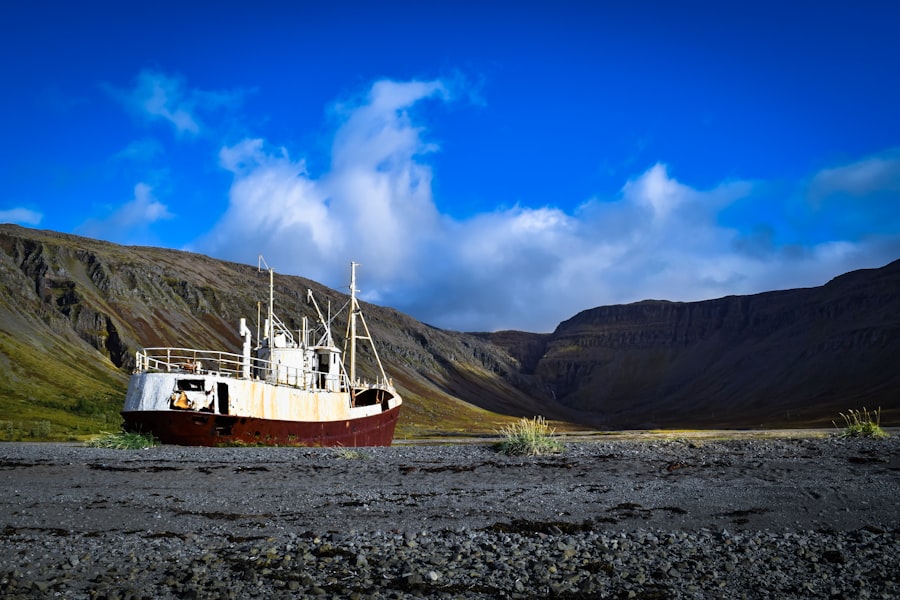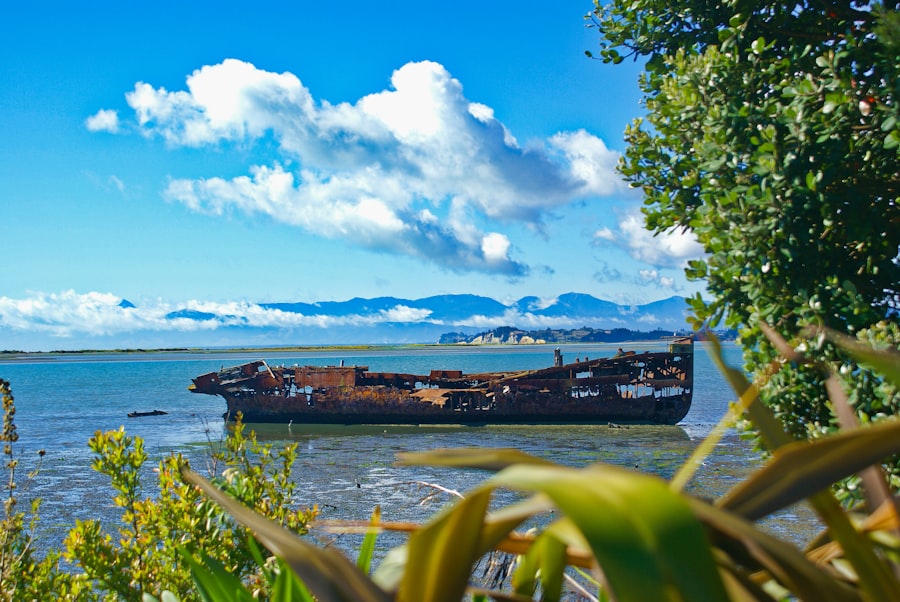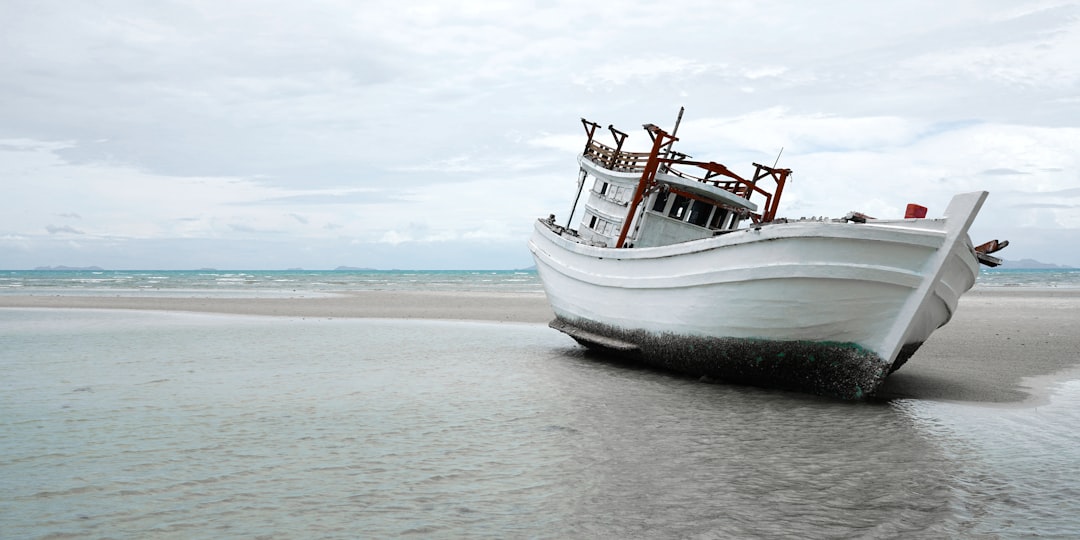The Drake Passage, a body of water situated between the southern tip of South America and Antarctica, is renowned for its tumultuous seas and unpredictable weather. Spanning approximately 800 kilometers (500 miles) in width, it serves as a critical maritime route for vessels traveling to and from the Antarctic region. Named after the English explorer Sir Francis Drake, who navigated these waters in the late 16th century, the passage has become synonymous with both adventure and peril.
Its unique geographical position not only connects two major landmasses but also plays a significant role in global ocean currents and climate patterns. Navigating the Drake Passage is often described as a rite of passage for sailors and adventurers alike. The waters are notorious for their rough conditions, which can change rapidly, creating a challenging environment for even the most seasoned mariners.
The passage is characterized by its deep waters and strong currents, which can lead to dangerous swells and waves that tower over ships. As such, it has earned a reputation as one of the most treacherous maritime routes in the world, drawing both awe and respect from those who dare to traverse it.
Key Takeaways
- The Drake Passage is a body of water between South America’s Cape Horn and the South Shetland Islands of Antarctica.
- The Drake Passage has a significant historical importance as it was a major route for early explorers and trade routes.
- Notable ships lost at sea in the Drake Passage include the Endurance, which was famously trapped and crushed by ice during Ernest Shackleton’s Antarctic expedition.
- The Drake Passage is known for its treacherous weather conditions, including strong winds, large waves, and unpredictable storms.
- Ships navigating the Drake Passage face challenges such as icebergs, extreme cold, and the lack of nearby rescue and support.
Historical significance of the Drake Passage
The historical significance of the Drake Passage cannot be overstated. It has long been a vital route for explorers, traders, and researchers seeking to unlock the mysteries of the Antarctic region. In the 16th century, Sir Francis Drake’s expedition marked one of the first European encounters with these waters, paving the way for future exploration and maritime trade.
His journey not only highlighted the potential of the passage but also underscored the challenges that lay ahead for those who would follow in his wake. Throughout history, the Drake Passage has served as a gateway to the Antarctic, facilitating scientific research and exploration. The early 20th century saw a surge in expeditions aimed at understanding the continent’s unique ecosystems and geography.
Notable figures such as Ernest Shackleton and Robert Falcon Scott ventured into these perilous waters, driven by a thirst for discovery and adventure.
Notable ships lost at sea in the Drake Passage

The Drake Passage has claimed numerous vessels over the centuries, with many ships meeting their fate in its unforgiving waters. One of the most infamous tragedies occurred in 1914 when the passenger liner SS Orinoco sank during a storm, resulting in the loss of many lives. This incident serves as a stark reminder of the dangers that lurk within the passage, where even well-equipped ships can succumb to nature’s wrath.
Another notable loss was that of the fishing vessel MV Taimyr, which disappeared without a trace in 1989 while navigating through the Drake Passage. The ship’s disappearance remains shrouded in mystery, highlighting the unpredictable nature of these waters. Such incidents have instilled a sense of caution among mariners, reinforcing the need for vigilance and preparedness when traversing this perilous route.
The treacherous weather conditions in the Drake Passage
| Metrics | Data |
|---|---|
| Wind Speed | Up to 70 knots |
| Wave Height | Up to 15 meters |
| Temperature | Below freezing |
| Iceberg Density | High |
The weather conditions in the Drake Passage are notoriously volatile, characterized by fierce winds and rapidly changing temperatures. The convergence of cold Antarctic waters with warmer currents from the north creates an environment ripe for storms and turbulent seas. Sailors often find themselves battling gale-force winds that can reach speeds of up to 100 kilometers per hour (62 miles per hour), making navigation exceedingly difficult.
Fog is another common occurrence in the Drake Passage, further complicating matters for those attempting to navigate its waters. Visibility can drop to near zero in an instant, leaving ships vulnerable to collisions or grounding. The combination of high waves, strong currents, and unpredictable weather patterns makes this passage one of the most challenging maritime routes in existence, demanding respect and caution from all who dare to traverse it.
Challenges faced by ships navigating the Drake Passage
Navigating the Drake Passage presents a myriad of challenges that test even the most experienced crews. One of the primary concerns is the sheer unpredictability of weather conditions. A calm sea can quickly transform into a raging tempest, catching sailors off guard and forcing them to adapt their strategies on the fly.
This constant state of alertness requires not only skill but also an intimate knowledge of local weather patterns. In addition to weather-related challenges, ships must contend with strong currents that can significantly affect their course. The Antarctic Circumpolar Current flows through the passage, creating powerful eddies and swells that can push vessels off track.
Navigators must be adept at reading charts and understanding oceanographic data to ensure safe passage through these treacherous waters. The combination of these factors makes sailing through the Drake Passage a formidable undertaking that demands both expertise and resilience.
The impact of the Drake Passage on maritime trade

The Drake Passage plays a crucial role in global maritime trade, serving as a key route for vessels transporting goods to and from Antarctica. While its treacherous conditions may deter some shipping companies, others recognize its importance in facilitating trade with research stations and scientific expeditions on the continent. The passage allows for the transport of essential supplies, equipment, and personnel necessary for ongoing research efforts in one of Earth’s most remote regions.
Moreover, the Drake Passage is integral to fisheries management in surrounding waters. The rich marine biodiversity found in these regions attracts fishing fleets seeking valuable resources such as krill and various fish species. However, this also raises concerns about overfishing and environmental sustainability, prompting discussions about responsible practices that balance economic interests with ecological preservation.
Famous expeditions and explorations in the Drake Passage
The Drake Passage has been a stage for some of history’s most famous expeditions and explorations. One such expedition was led by Ernest Shackleton aboard his ship, Endurance, in 1914. Shackleton’s journey aimed to cross Antarctica from sea to sea via the South Pole but was thwarted when his ship became trapped in pack ice.
Another notable expedition was that of Robert Falcon Scott, who sought to be the first to reach the South Pole in 1911. His journey through the Drake Passage was fraught with challenges, yet it contributed significantly to our understanding of polar exploration.
These expeditions not only advanced scientific knowledge but also captured the imagination of generations, inspiring countless adventurers to brave the elements in pursuit of discovery.
The role of modern technology in navigating the Drake Passage
In recent years, advancements in technology have transformed how ships navigate through the Drake Passage. Modern vessels are equipped with sophisticated navigation systems that utilize satellite technology and real-time weather data to enhance safety and efficiency. These tools allow crews to make informed decisions about their routes and adjust their courses based on changing conditions.
Additionally, improved communication systems enable ships to stay connected with shore-based support teams, providing access to vital information about weather patterns and potential hazards. This integration of technology has significantly reduced risks associated with navigating this challenging passage, allowing for safer travel while still acknowledging the inherent dangers that remain.
The environmental significance of the Drake Passage
The environmental significance of the Drake Passage extends beyond its role as a maritime route; it is also a critical area for marine biodiversity and ecological research. The passage serves as a conduit for nutrient-rich waters that support diverse marine life, including whales, seals, and various fish species. This unique ecosystem is vital for maintaining global ocean health and plays a crucial role in regulating climate patterns.
Furthermore, ongoing research efforts in the region aim to understand how climate change impacts these delicate ecosystems. Scientists study ocean currents, temperature fluctuations, and species migration patterns to gain insights into broader environmental changes occurring worldwide. The Drake Passage thus stands as both a natural wonder and a focal point for scientific inquiry into pressing global issues.
Safety measures for ships traveling through the Drake Passage
Given its reputation for treacherous conditions, safety measures are paramount for ships traveling through the Drake Passage. Mariners are encouraged to conduct thorough pre-voyage assessments that include reviewing weather forecasts, understanding current patterns, and ensuring that vessels are equipped with appropriate safety gear. Life rafts, emergency beacons, and communication devices are essential components of any ship’s safety arsenal.
Training is another critical aspect of ensuring safe navigation through these waters. Crews undergo rigorous training programs that emphasize emergency preparedness and response strategies tailored specifically for harsh maritime environments. By fostering a culture of safety awareness and preparedness, shipping companies can mitigate risks associated with traversing one of the world’s most challenging passages.
The ongoing risks and perils of the Drake Passage
The Drake Passage remains an enigmatic body of water that continues to captivate adventurers while posing significant risks to those who dare to navigate its depths. Its historical significance as a route for exploration and trade is matched only by its reputation for treachery and unpredictability. Despite advancements in technology and safety measures, mariners must remain vigilant against nature’s whims as they traverse this formidable passage.
As global interest in Antarctica grows due to climate change research and ecological conservation efforts, understanding the complexities of navigating through the Drake Passage becomes increasingly important. It serves as both a gateway to one of Earth’s last frontiers and a reminder of humanity’s enduring struggle against nature’s forces. The ongoing challenges faced by those who navigate these waters underscore not only their bravery but also their commitment to exploration and discovery in an ever-changing world.
The Drake Passage, known for its treacherous waters and unpredictable weather, has been the site of numerous shipwrecks throughout history. This perilous stretch of sea, connecting the Atlantic and Pacific Oceans, has claimed many vessels due to its strong currents and frequent storms. For those interested in learning more about the challenges faced by ships navigating this infamous route, a related article on the topic can be found on MyGeoQuest. This article delves into the history and the number of ships lost in the Drake Passage, providing a comprehensive overview of the maritime risks associated with this region. You can read more about it by visiting this article.
WATCH NOW! Drake Passage: Earth’s Deadliest Waters Revealed
FAQs
What is the Drake Passage?
The Drake Passage is the body of water between the southern tip of South America and the northern tip of the Antarctic Peninsula. It is known for its rough seas and challenging sailing conditions.
How many ships have been lost in the Drake Passage?
There is no definitive number of ships that have been lost in the Drake Passage. The area is known for its treacherous conditions, but specific records of shipwrecks in the passage are not readily available.
What makes the Drake Passage so dangerous for ships?
The Drake Passage is known for its strong winds, large waves, and unpredictable weather patterns. These conditions can make sailing through the passage challenging and dangerous for ships.
Are there any safety measures in place for ships traveling through the Drake Passage?
Ships traveling through the Drake Passage are required to adhere to strict safety regulations and guidelines. Many ships also employ experienced and skilled crew members who are familiar with navigating through the challenging conditions of the passage.
Is it safe to travel through the Drake Passage?
While the Drake Passage is known for its challenging conditions, many ships successfully navigate through the passage each year. With proper preparation, experienced crew, and adherence to safety regulations, traveling through the Drake Passage can be done safely.
